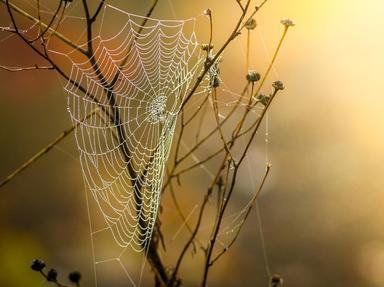Quiz Answer Key and Fun Facts
1. Widow spiders are found throughout the world but the primary habitat for the black widow is North America. Which of these species is NOT one found in this area?
2. The female black widow is known for having a red hourglass shape on the underside of her abdomen. How are the male spiders marked?
3. The female widow spider produces silk for her web and for the 4-9 egg sacs she lays per year. What type of web and consistency of silk does she have?
4. What time of year does the female widow lay her egg sacs?
5. Of the several hundred eggs per sac, less than a dozen will survive to maturity. What is the most common reason that so many eggs are lost?
6. The female widow gained her reputation and name from the custom of eating her partner after mating. In reality, this rarely happens.
7. The female black widow is one of the most dangerous creatures with venom more potent than coral snakes, cobras or rattlesnakes. However her bite is rarely fatal in humans. Why not?
8. What is the normal diet of the widow spider?
9. You've been bitten by a black widow. What should you do until the help arrives?
10. Luckily you have survived the bite of the black widow but you would like to avoid having that experience again. Which of these preventive measures does NOT work?
Source: Author
takrom
This quiz was reviewed by FunTrivia editor
crisw before going online.
Any errors found in FunTrivia content are routinely corrected through our feedback system.
